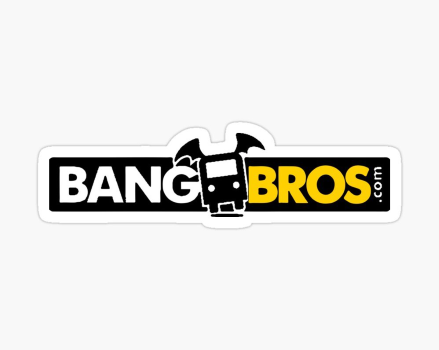Sometimes, what begins as a tantalizing depiction of desire and pleasure can quickly turn into something much darker. This is the evolution that Lust Cinema has undergone, transitioning from its origins as an erotic platform to one that explores the sinister side of sexuality. With thought-provoking and boundary-pushing films, Lust Cinema challenges viewers’ perceptions of lust and reveals how it can lead down a dangerous path.

Adult Time
 New releases every day
New releases every day 60,000+ episodes & 400+ channels
60,000+ episodes & 400+ channels Supports VR & interactive sex toys
Supports VR & interactive sex toys Watch on mobile, desktop or FireTV
Watch on mobile, desktop or FireTV
LetsDoeIt
 4K Exclusive Porn
4K Exclusive Porn 1000+ Scenes
1000+ Scenes Unlimited Steaming & Downloading
Unlimited Steaming & Downloading New Models You Wouldn't Have Seen
New Models You Wouldn't Have Seen Free Trial (Steaming Only)
Free Trial (Steaming Only)
Brazzers
 4K Exclusive Porn
4K Exclusive Porn 10000+ Scenes
10000+ Scenes Unlimited Steaming & Downloading
Unlimited Steaming & Downloading Over 2500 Pornstars
Over 2500 Pornstars Discounted Membership
Discounted Membership
Naughty America
 Unlimited downloading & streaming
Unlimited downloading & streaming Over 10,000+ porn scenes
Over 10,000+ porn scenes HD, 4K & VR porn content
HD, 4K & VR porn content Supports all devices including VR headsets
Supports all devices including VR headsets
Evil Angel
 Multiple weekly video updates
Multiple weekly video updates Over 18,000+ hardcore videos
Over 18,000+ hardcore videos Unlimited access to 80+ channels
Unlimited access to 80+ channels Award-winning series with top pornstars
Award-winning series with top pornstars
MamaCitaz
 4K Exclusive Latina Porn
4K Exclusive Latina Porn 800+ Scenes
800+ Scenes Unlimited Steaming & Downloading
Unlimited Steaming & Downloading Exclusive Latina Models
Exclusive Latina Models Free Trial For Two Days
Free Trial For Two DaysThe Sensual Beginnings
The earliest examples of lust cinema can be traced back to the silent era of cinema in the late 19th century. These films were often short reels showcasing stripteases or simulated sex acts, hidden under the guise of educational or artistic purposes. These types of films were known as stag films and were primarily consumed by male audiences in private screenings.
However, it wasn’t until the 1960s and 1970s that lust cinema gained more recognition through underground filmmakers who started experimenting with sexual themes in their work. One notable example is Andy Warhol’s Blue Movie (1969), which is considered one of the first mainstream films to feature unsimulated sex scenes. These early works showcased nudity and sexual acts in a rather straightforward manner without much emphasis on plot or character development.
The Golden Age of Lust Cinema: The 1970s-80s
The 1970s and 1980s are often referred to as the Golden Age of lust cinema. This period saw a surge in the production of erotic films, thanks to the relaxation of censorship laws and the rise of pornography. If you’re interested in learning more about the history and impact of the porn industry, related homepag provides a comprehensive overview and analysis. Directors like Radley Metzger, Tinto Brass, and Joe Sarno gained critical acclaim for their boundary-pushing films that explored sexual fantasies and desires.
Films during this era were characterized by their explicit nudity, simulated sex scenes, and provocative storylines. One such example is the Italian film Emmanuelle (1974), which gained worldwide success and spawned numerous sequels. These films were marketed as being more than just pornography – they claimed to explore human sexuality and break societal taboos.
The Crossover: Mainstream Success
As the popularity of lust cinema grew in the late 20th century, some films managed to crossover from underground circles to mainstream audiences. One such example is Basic Instinct (1992), directed by Paul Verhoeven, which became a box office hit despite its controversial depiction of sex and violence. This marked a shift in how audiences perceived lust cinema, moving away from its sleazy reputation to being viewed as a legitimate form of entertainment. Now, if you’re curious about the quality and variety of VR porn on VRPorn.com, here’s a detailed review that covers everything from site design to performance.
This crossover also led to more big-budget productions exploring sexual themes, such as Eyes Wide Shut (1999) directed by Stanley Kubrick and Secretary (2002) starring James Spader and Maggie Gyllenhaal. These films added layers of complexity to their exploration of desire and passion, making them more than just titillating experiences.
The Sinister Turn
As we entered the new millennium, there was a noticeable shift in lust cinema – it started incorporating darker elements into its narratives. Rather than solely focusing on sexual pleasure, these films explored themes of obsession, manipulation, and power dynamics. One such example is Black Swan (2010), directed by Darren Aronofsky, which uses sexuality as a tool to drive the protagonist towards madness.
This darker turn in lust cinema can also be attributed to the rise of independent filmmakers who were unafraid to push boundaries and challenge societal norms. These films explored complex themes of sexuality, gender, and identity in a way that had never been seen before in mainstream media.
The Impact of Technology
The evolution of technology has also played a significant role in shaping lust cinema. With the advent of the internet and streaming platforms, audiences now have access to a vast array of films from all over the world. This has led to an increase in the production and accessibility of erotic films, catering to diverse tastes and preferences. Though Shemale Porn Promo may not be everyone’s cup of tea, it is a popular genre in the adult industry and can offer a great deal of diversity and satisfaction for those who are interested.
Moreover, advancements in visual effects have allowed for more realistic depictions of sexual acts on screen. This has opened up new avenues for filmmakers to explore even more explicit content without relying solely on nudity or simulated sex scenes.
In Summary
From its humble beginnings as stag films to its current state as a genre incorporating dark and complex themes, lust cinema has come a long way. What started as simple titillation has transformed into thought-provoking explorations of human desire, pushing the boundaries of what is deemed socially acceptable.
While there may still be criticisms surrounding this genre, it cannot be denied that lust cinema has played a significant role in challenging societal norms and opening up conversations about sexuality. It will be interesting to see how this genre continues to evolve with advancing technology and changing perspectives on human desires.
What is Lust Cinema and what type of content can be found on the platform?
Lust Cinema is an adult film platform that offers a variety of content for those looking for more artistic and sensual erotic films. The content ranges from short films to feature-length movies, with a focus on high-quality production and storytelling. It’s a great option for those who want to explore their sexuality in a more sophisticated and artistic way.
Are there any age restrictions for viewing content on Lust Cinema?
Yes, there are age restrictions for viewing content on Lust Cinema. The website explicitly states that the content is intended for adults only and viewers must be 18 years or older to access it. This is due to the explicit nature of the content, which may not be suitable for younger audiences.
How often is new content added to Lust Cinema’s collection?
New content is added to Lust Cinema’s collection on a regular basis, typically around once a week. This ensures that there is always fresh and exciting material for viewers to enjoy. With a diverse range of genres and high-quality productions, Lust Cinema continuously updates its collection to provide the best experience for its audience.
Can users submit their own films to be featured on Lust Cinema?
Yes, users can submit their own films to Lust Cinema for potential feature on the platform. The submission process involves filling out a form and providing a link to the film for review by the Lust Cinema team. If selected, the film will be added to the site’s collection for paid viewing by subscribers.



